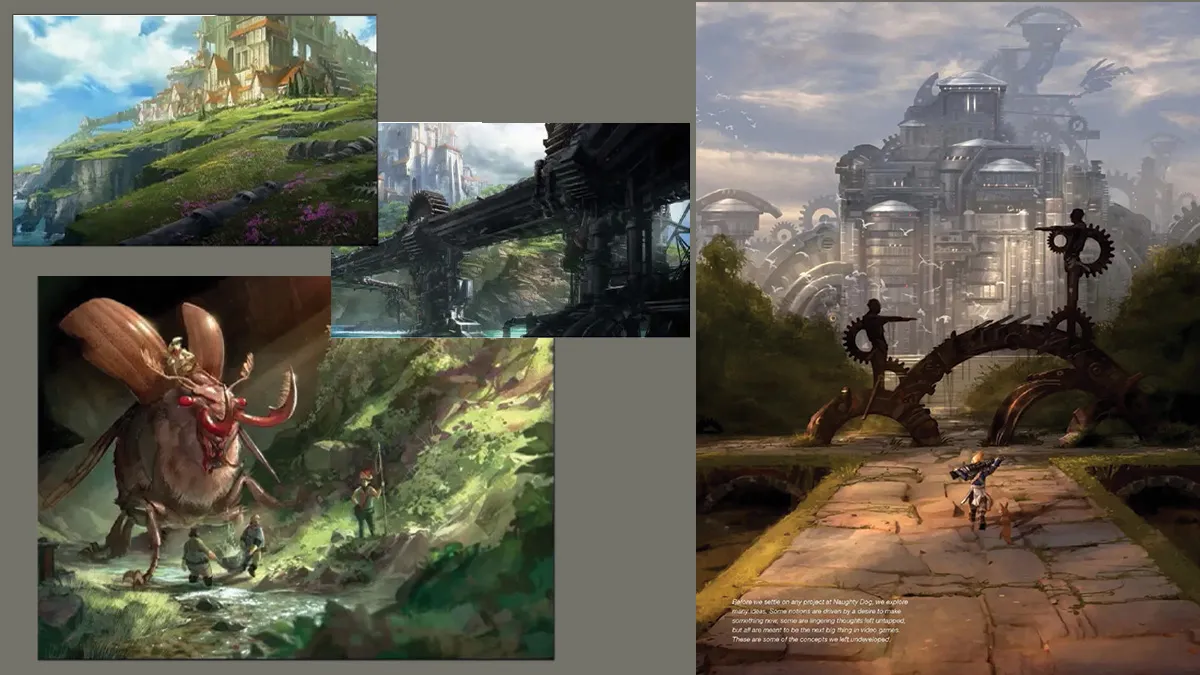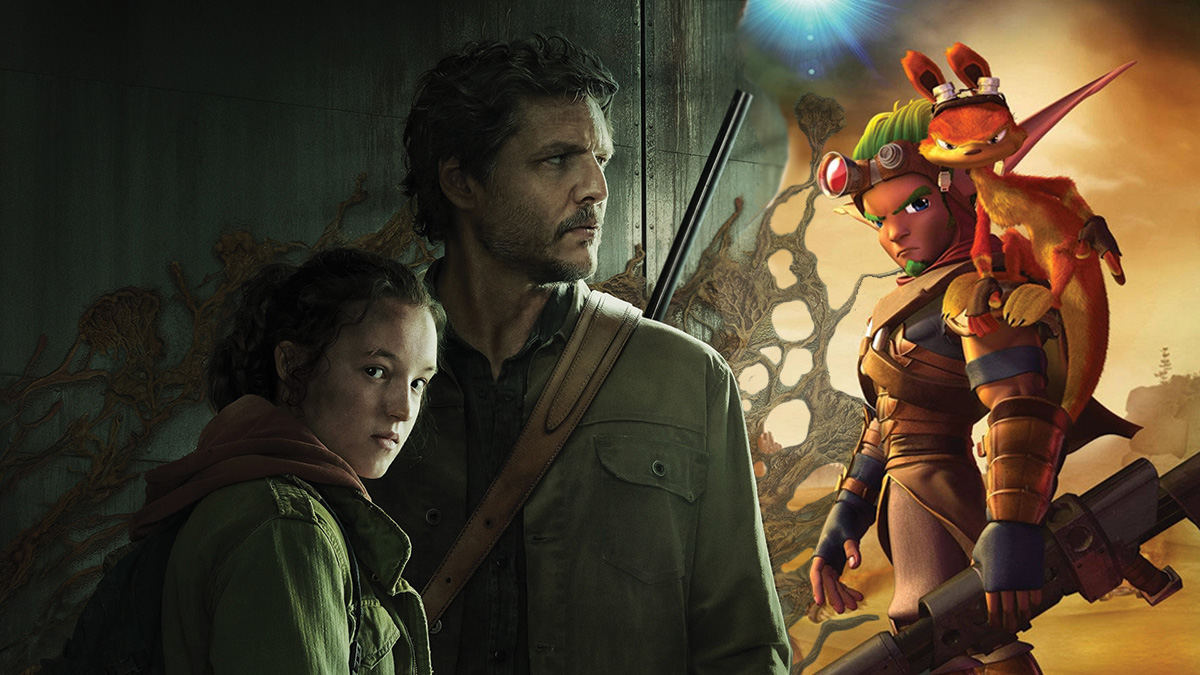The Last of Us television show, based on a 2013 video game of the same name, has been lauded by fans and critics alike. The captivating drama, developed by Naughty Dog studios, is only one of many successful titles the company has released during its nearly 40 years in the business. The now-beloved zombie game was originally slated as a sequel to another one of Naughty Dog’s other original IP’s, Jak and Daxter.
Jak and Daxter (2001) was originally developed by Naughty Dog for the PS2. The title was one of the console’s best sellers and would come to define an era of gaming for Sony. A platforming RPG, the game put players in control of the titular Jak as he searched a verdant but desolate world for a cure to his recently cursed friend, Daxter. With cute memorable character designs, bright colors, and a solar-punk aesthetic, the game captured a generation of gamers and kept Naughty Dog alive after they lost the rights to their first best seller, Crash Bandicoot.
The series would spawn several follow-up games after its release and consistently evolved over the subsequent entries. Released almost yearly starting in 2001, the trilogy, Jak and Daxter, Jak II and Jak 3 was followed up by three spin offs, Jak X: Combat Racing, Daxter, and Jak and Daxter: The Lost Frontier (which was passed off to developer High Impact Games). While the first game had a sweet cartoonish aesthetic, developers at Naughty Dog noticed the lack of older gamers engaging with their products and made a concentrated effort to enhance their gameplay experiences for older audiences. The result was shift in tone between the first and second game.
Besides increasing Jak’s angst meter to 100, it introduced gun play, more vehicle options and, while it kept much of the solar-punk style, implemented a new dystopic direction to the series. Again, the game was well received by critics and players alike. The third installment, yet again, was grittier than its predecessor. Its darker tones reflected the aging fan base for the series, but also Naughty Dog’s transition from the cartoonish and colorful nature of its early days, to the much more recognizable human elements the company thrives on today.
Despite their success, Naughty Dog Studios had a rocky transition from the Playstation 2 to the Playstation 3. The upgrade in software forced the company to rewrite their aged code base. A rocky and time-consuming undertaking in and of itself, it was exacerbated by a change in management. During the transition, the team had little choice but to scrap projects and ideas in order to reorient around new software and business practice. In The Art of Naughty Dog, Team members revealed that the company hemorrhaged employees at the time, with an employees quitting weekly due to the overwhelming odds.
After a few years of hardship, the company rebounded with the wildly successful Uncharted: Drake’s Fortune (2007). The success of the game, which solidified the in the company’s art direction, was enough to allow the studio to tackle multiple projects at once. Neil Druckman, one of the co-writers for Uncharted, was paired with Bruce Straley, the soon to be co-director of The Last of Us, and the duo was put in charge of creating a fourth entry into the main Jak and Daxter series.
While the team at Naughty Dog is reticent to bash the work done by High Impact games in Jak: and Daxter: The Lost Frontier, many felt it was not the “swan song” the series deserved after its run. The passionate team quickly set to work using all of the things they had learned during the production of Uncharted. In The Art of Naughty Dog, they recall one of the central development ideas being, “how much more could we get the plater to invest in the moment, and feel the way our protagonist (or later, protagonists) is feeling in the story?”

Centering their story around survival and the exploration of a deep connection between two contrasting characters, the team was quickly excited by the potential in a “road story,” a story centered on a dangerous journey laden with ups and downs that ultimately changes those involved. After seeing an episode of BBC’s Planet Earth that centered on the cordyceps fungus and becoming completely obsessed with the idea, the team realized that their story had strayed far from its base.
Jak 4 was supposed to continue growing with its fan base, but with Jak’s lengthy history, its characters didn’t have the room needed for the growth the team wanted to showcase. The more they struggled to fit the already well-known characters into the story they wanted to tell, the more they realized that it would be a bastardization of both. As Neil Druckman would phrase it during his Keynote at IGDA Toronto in 2013, “As much as we liked a lot of these concepts and exploring this fantastical world, we found that the ideas we were passionate about were kind of getting away from what Jak and Daxter was.”
At the end of the day, the team felt that what they were creating wasn’t true to what made the Jak and Daxter games, but rather leaned on the already popular IP instead of enhancing it. While they had some wonderful ideas and some incredibly cool concept sketches, their designs weren’t something fans of the franchise would likely be willing to accept as true Jak and Daxter lore. When the co-directors took their concerns to the Naughty Dog higher-ups, they received nothing but good news; Naughty Dog execs gave the team the go ahead to work on whatever story they were interested in, regardless of whether or not it was guaranteed an audience. The bet paid off, and The Last of Us was fully realized. The game, while following a long history of success by Naughty Dog, has become a critical darling, and represents the best of what video games can offer.











Published: Feb 21, 2023 02:26 pm